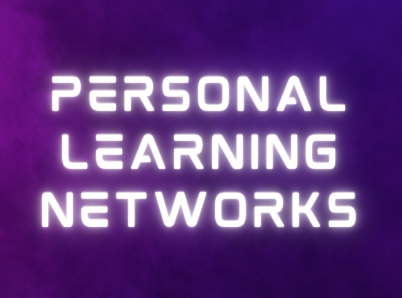Personal Learning Networks (PLNs)

There are many aspects in life that require specific knowledge and skill. To prevent a cause of disarray, one may feel that it is helpful to join groups of people that share the same interests, or that are going through the same experiences. When being a part of these groups, individuals may gain depth and knowledge of information from people so they can acquire new skills. There are opportunities to reflect and discover fresh ways to solve problems (Kennedy, 2018). The type of scenario I am talking about is known as personal learning networks. Personal learning networks, or PLNs are opportunities for individuals to join groups and engage in a particular topic, mainly through technological platforms. Additionally, PLNs are ways for individuals to intrinsically continue getting curious about new information that they would like to gain (Kennedy, 2018).
Current Professional Learning Networks
The three current PLNs that I am apart of are GroupMe, Slack, and TikTok. Different PLNs can be used for different areas of our life. For example, I use GroupMe for expanding my education. I join a group without exposing my phone number, and in this group, I can ask questions about how a particular assignment I am completing is done. There are other scholars who are taking the same course that are a part of this group. I use Slack for my career. As a teacher, I am in constant communication with peers about individual education plans, consultative services, and current events that my school is partaking in. Another PLN I use is TikTok. This is something I use for entertainment, as well as quick tips for my career. I follow specific influencers to obtain quick information about the latest trends in the world of education. However, I do feel that there is an importance in constantly discovering different PLNs to expand your knowledge about a particular subject.

Three New PLNs
Upon my research, I discovered three new PLNs that would help me expand my learning experience as a teacher, an instructional designer, and a curriculum writer. They are as followed:
Maneuvering the Middle was the first PLN I discovered. I constantly feel defeated as a math teacher. Though it is my strongest subject as a scholar, I am afraid teaching it is a very different story. The plan for this PLN will allow me to learn new strategies to engage learners so that way new concepts will be meaningful and long-lasting. The only downfall with this PLN is that it is very expensive. Nevertheless, I will continue to search for new PLNs that will help me grow as an educator in the subject of math. The second PLN I have discovered as an instructional designer is LinkedIn. This PLN will aid in helping me grow my skills as an instructional designer. To join the website, it is free. As I further explore the application, I can find job postings for the career I display on my profile in nearby areas. Not only do the job postings display the location, but they also share what skillset professionals need to work at a company. For example, one job explains that I need to have some kind of knowledge using Articulate 360. To take it even further and find another PLN, I can join a group of beginners who are learning about Articulate 360 on Facebook or LinkedIn so that way I can obtain that skillset for this job posting. I plan to use this website to build my professional resume and join professional networks as I grow in the field of instructional design. The last PLN that I will use to expand skill and knowledge is EdSurge. This website is filled with many articles stemming from the field of education. There are specific articles and guides that are catered to early learning, K-12 learning, and even higher ed. What I like about this website is that it also allows audio learners to stream their podcast. Using this tool as a way for quick professional developments will allow me to grow as an educator, instructional designer, and as a curriculum writer.
The Benefits of Belonging to a PLN
There are many benefits to belonging to a PLN. Some of these benefits include long-distanced collaboration, learner-centered engagement, and inquiry-based building of new skills. The idea of PLNs promotes a medium for individuals to collaborate from far distances (Chattopadhyay, 2016). Being a part of a PLN allows me to ask questions without wasting time driving somewhere. Furthermore, collaboration is learner-centered and new information is being obtained from other learners through the experiences they undergo whilst learning a new skill. Not one individual is better than the other because all learners are obtaining new skills at their own pace. Because of this, PLNs provide a constructivist environment. Not only does collaboration engage learners, but individuals take charge of their own education with skills they would like to build. It is essential for scholars to practice creating their own PLNs so they can enhance their professional development (Chattopadhyay, 2016).
Conclusion
In conclusion, personal learning networks are a great way for individuals to build on skills that they are trying to hone by use of technological platforms. Learners can obtain information from like-minded people, and new relationships form because of this. Not only that, but PLNs create a space for learners to take charge of their education and get curious about the things they want to get curious about. PLNs are great for scholars who want to learn something new and not feel intimidated by those who are more skilled than they.
References
Chattopadhyay, S. (2016, July 1). Why build personal learning networks. eLearning Industry. https://elearningindustry.com/build-personal-learning-networks
Kennedy, J. (2018). Towards a model of connectedness in personal learning networks. Journal of Interactive Online Learning, 16(1), 21–40.